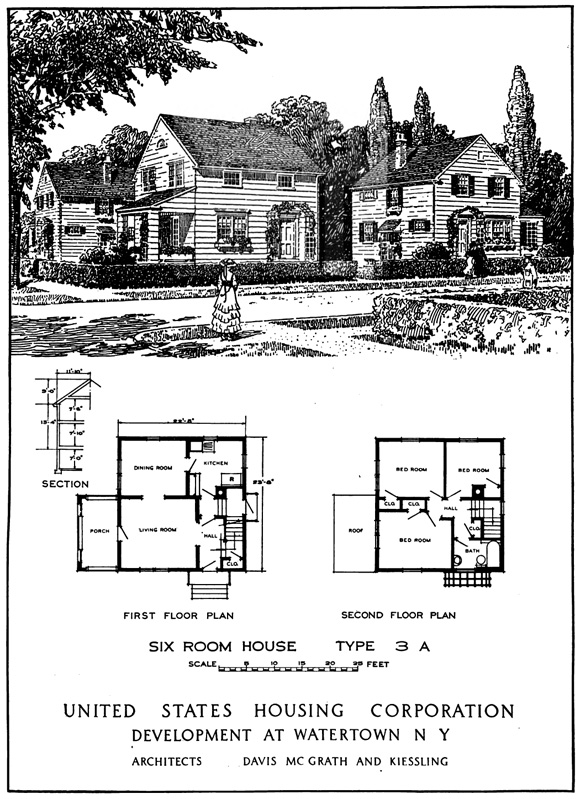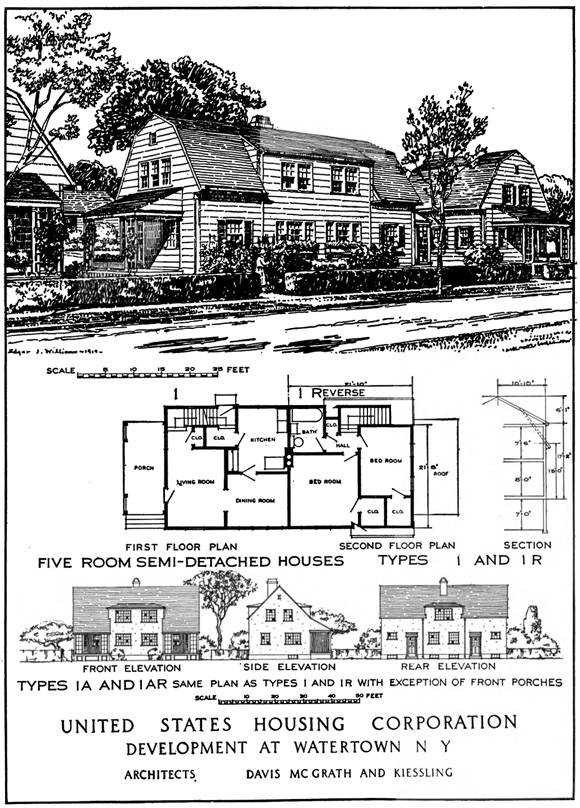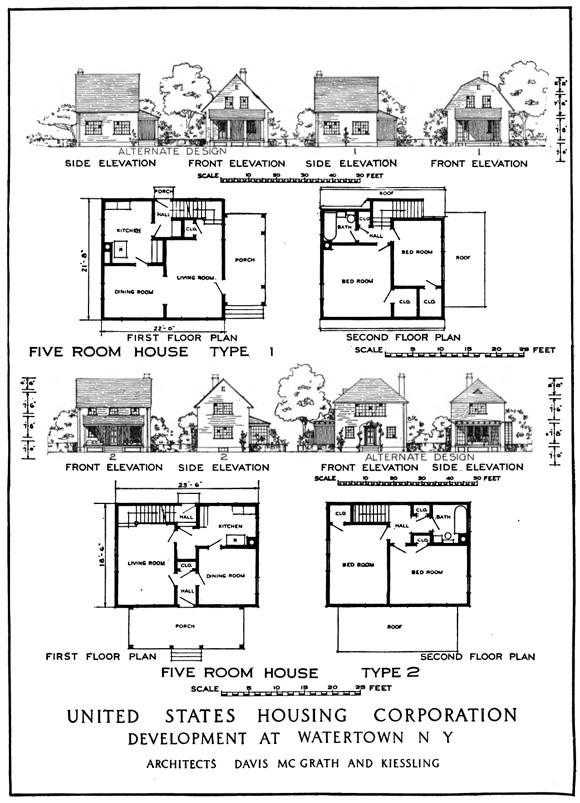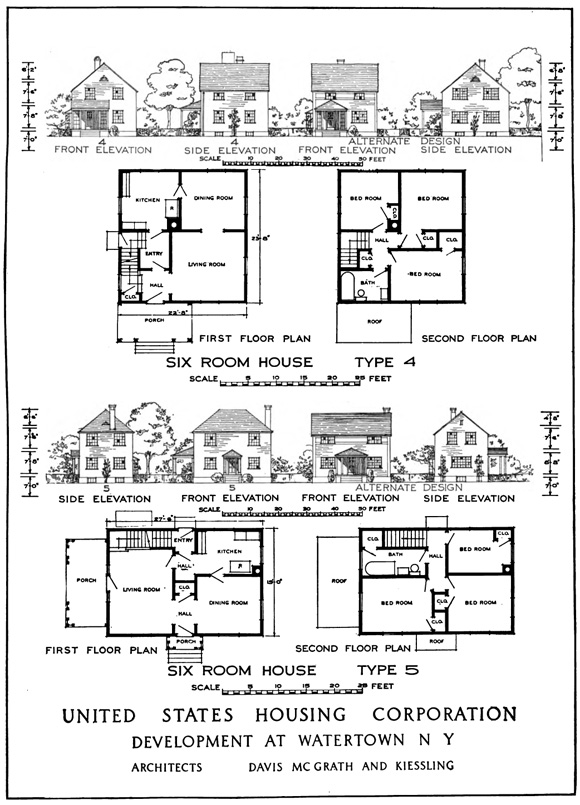Watertown, NY
General Description (1919 report):
"The city of Watertown, NY is located on the Black River about 100 miles north of Utica, and a few miles from the shore of Lake Ontario. It is a typical manufacturing city with approximately 40,000 inhabitants. The homes are of an attractive type, neither elaborate nor poor, and the city is generally inhabited by a good class of people who own their own homes and expect to spend their lives in the community. The principal industry is the New York Air Brake Co., which during the war has been engaged in the manufacture of munitions. There were numerous other industries, particularly those manufacturing brass and bronze goods, which were more or less directly engaged in war work. Because of the rather isolated situation of the city, the labor problem was very acute.
"It was early decided that a considerable number of houses should be built at Watertown. A number of alternative sites were considered in detail, since all had disadvantages. Finally a site was selected on the northeast side of the city and west of the New York Air Brake Co. Some 60 acres of land were available, already in large part subdivided for building purposes and with a considerable number of scattered houses already constructed."
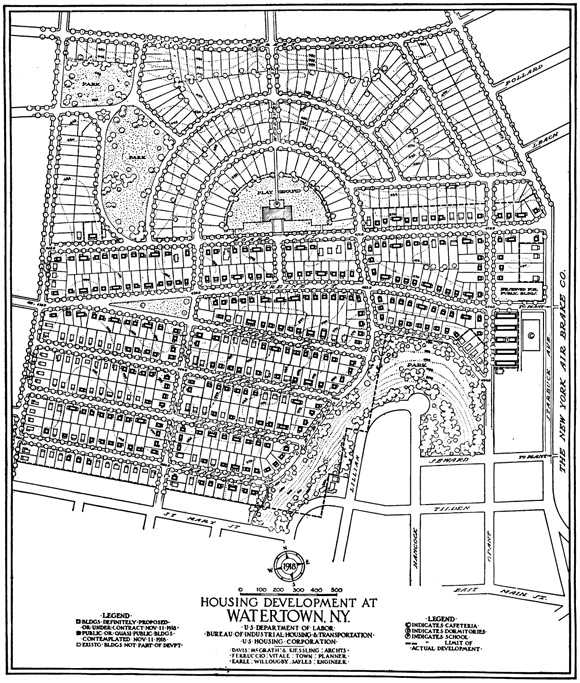
1919 excerpt describing the design of the Watertown Site:
Area planned: 47.94 acres. Housing planned: Detached houses, 226 families; semidetached houses, 76 families; total, 302 families; dormitories, 205 persons.
Housing constructed: Detached houses, 85 families; semidetached houses, 30 families; total, 115 families.
"The site is entirely within the city limits and is not far from the down-town district by way of well paved and completely developed streets. It is also partially served by a street car line a short distance to the east...
"The entire plan is of interest, showing first how an existing haphazard street system can be related to a larger district, and second, showing the much greater opportunities to secure the benefits of town planning on open land as compared with that already platted. Several different and conflicting street and lot arrangements for the southern portion of the tract had been filed, and in fact officially accepted by the city, resulting in very unsatisfactory and confused conditions. It was not considered wise therefore to follow any of the earlier subdivisions exactly, an entirely revised scheme being substituted, making the best of conditions as they existed. A great deal of skill and patience was necessary in the real estate negotiations, and much time was necessarily expended both by the negotiator and by the designers, on account of the hampering effect of these existing conditions...
"The first impression of the houses is that they are diminutive. They are. But this is not a fault. With a certain type of plan given, and governed by certain dimensions and interior requirements, it would be a fault had these standards been exceeded in order that the house might have greater bulk or more imposing appearance."
The Watertown Site Today
Renderings, 1919
